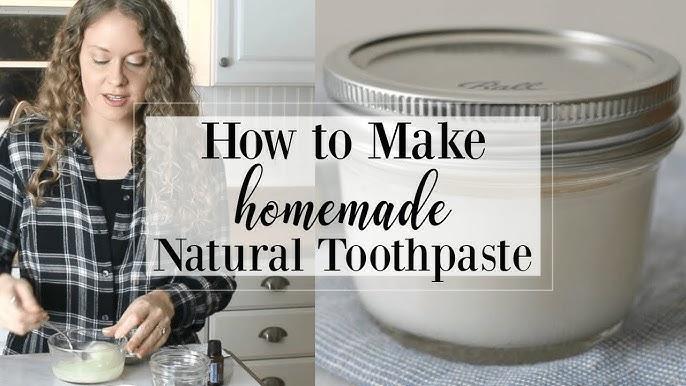Minty Fresh: Flavor Ideas for Homemade Toothpaste
Why Flavor Matters in Homemade Toothpaste
Creating your own toothpaste can be a fun and rewarding project, whether you’re doing it for personal use or looking to develop a new product line. One key element that makes toothpaste enjoyable to use is its flavor. Flavor not only impacts the taste experience but also contributes to the effectiveness of oral care. A good flavor can encourage consistent brushing and give you a fresh, clean feeling all day long.
Natural Flavor Ideas for Homemade Toothpaste
If you’re looking to make your toothpaste as natural as possible, there are many plant-based, refreshing, and flavorful ingredients you can use. Below are some of the best ideas for flavoring your homemade toothpaste naturally:
1. Peppermint
Peppermint is the classic go-to flavor for toothpaste. It has a strong, refreshing taste and natural antibacterial properties that help kill bacteria in the mouth. Additionally, peppermint oil can give your toothpaste a cool, tingly sensation, leaving your mouth feeling extra fresh.
- Why Choose It: Peppermint is known for its ability to promote healthy gums, freshen breath, and prevent bad odors.
- How to Use: Use a few drops of organic peppermint essential oil in your homemade paste.
2. Spearmint
Spearmint has a milder, sweeter taste than peppermint, but it still provides a fresh, cooling effect. It’s another excellent choice for toothpaste, especially if you prefer a gentler mint flavor that’s less intense.
- Why Choose It: Spearmint is refreshing, gentle, and also contains antibacterial properties to help fight bad breath.
- How to Use: Similar to peppermint, spearmint essential oil can be added in small amounts to your homemade paste.
3. Cinnamon
Cinnamon adds a warm, spicy flavor to toothpaste. It’s not only delicious but also has natural antibacterial and anti-inflammatory properties, which can help prevent gum disease and reduce bacteria in the mouth.
- Why Choose It: Cinnamon helps with oral hygiene by promoting healthy gums and fighting bacteria.
- How to Use: You can mix a pinch of ground cinnamon or a drop of cinnamon essential oil into your paste.
4. Clove
Clove has been used for centuries for its medicinal and antiseptic properties. It has a unique, spicy flavor and is particularly effective for promoting gum health and alleviating toothaches. If you want a unique and potent flavor, clove might be the perfect choice.
- Why Choose It: Clove oil contains eugenol, a powerful compound that acts as an analgesic and antimicrobial agent.
- How to Use: Use a drop or two of clove essential oil to add a warm, spicy flavor to your toothpaste.
5. Orange
For a more fruity option, orange provides a bright and zesty flavor. The citrusy taste of orange essential oil not only freshens breath but also has antibacterial properties that help keep your mouth healthy. It’s especially great for people who prefer a sweeter taste compared to the more intense mint flavors.
- Why Choose It: Orange oil is naturally antibacterial and antiviral, helping to fight harmful bacteria in the mouth.
- How to Use: Add a few drops of orange essential oil or mix in some fresh orange zest for a fragrant, fresh twist.
6. Lemon
Lemon is another refreshing citrus option that works well in homemade toothpaste. The fresh, tangy flavor gives an energizing sensation and can brighten your mood while it cleans your teeth. Additionally, lemon has natural bleaching properties, which can help remove surface stains from teeth.
- Why Choose It: Lemon has natural antiseptic qualities and helps to lighten stains on teeth.
- How to Use: A drop of organic lemon essential oil or a squeeze of fresh lemon juice is enough to add a refreshing burst.
7. Lavender
Lavender isn’t typically thought of as a toothpaste flavor, but its soothing properties make it a great addition to your homemade paste. The calming scent of lavender helps create a relaxing experience, which can be particularly helpful if you have dental anxiety or want to create a more gentle brushing routine.
- Why Choose It: Lavender is known for its calming and antibacterial effects, making it a great addition for oral care.
- How to Use: A drop of lavender essential oil can be added to your toothpaste for a gentle floral flavor.
8. Tea Tree
Tea tree oil is famous for its antiseptic and antifungal properties. It’s a powerful addition to homemade toothpaste, helping to fight plaque, bad breath, and gum disease. While tea tree oil has a more medicinal taste, it’s highly effective in keeping your mouth clean.
- Why Choose It: Tea tree oil is known for its strong antibacterial and antifungal properties, helping prevent gum disease and tooth infections.
- How to Use: Use only a drop or two of tea tree essential oil, as it has a potent flavor.
9. Strawberry
For a sweet, fruity option, strawberry is a fantastic choice. It contains malic acid, which is known for its natural teeth-whitening effects. Combining the flavor of strawberry with a dash of baking soda or activated charcoal can create a toothpaste that’s both delicious and effective in removing surface stains.
- Why Choose It: Strawberry has natural teeth-whitening properties and a pleasant, mild sweetness.
- How to Use: You can use fresh mashed strawberries or strawberry essential oil.
10. Coconut
Coconut oil is an excellent base for making homemade toothpaste. It has a subtle, slightly sweet flavor and is also known for its antimicrobial properties. Coconut oil can be used as a carrier oil for other flavors like mint, cinnamon, or citrus, enhancing the flavor profile and adding additional benefits.
- Why Choose It: Coconut oil helps to moisturize and soothe gums, while its natural antimicrobial properties support oral hygiene.
- How to Use: Use coconut oil as the base for your toothpaste, and combine it with essential oils like peppermint or orange.
How to Choose the Right Flavor for Your Toothpaste
When choosing a flavor for your homemade toothpaste, consider the following factors:
- Personal preference: Choose a flavor that you personally enjoy, as this will encourage you to brush regularly.
- Purpose: If you’re making toothpaste for whitening, a combination of strawberry or lemon with baking soda works well. For general oral health, peppermint and clove oils are effective.
- Taste sensitivity: Some flavors, like cinnamon or clove, can be too strong for certain individuals. If you’re making toothpaste for others, choose more neutral flavors like peppermint or spearmint.
Try Lidercare Now!
We Help You Launch New Products, And Continue To Grow. Try Us With 20% Off Your First Order!
Final Thoughts
Creating your own homemade toothpaste can be a fun and rewarding project. Choosing the right flavor not only enhances the brushing experience but can also provide added oral health benefits. From classic mint to fruity options like strawberry and orange, the possibilities are endless. With the right combination of natural flavors, you can craft a toothpaste that’s effective, enjoyable, and perfectly suited to your needs.
Table of Contents
Awesome! Share to:
Latest Blog Posts
Check out the latest industry trends and take inspiration from our updated blogs, giving you a fresh insight to help boost your business.




